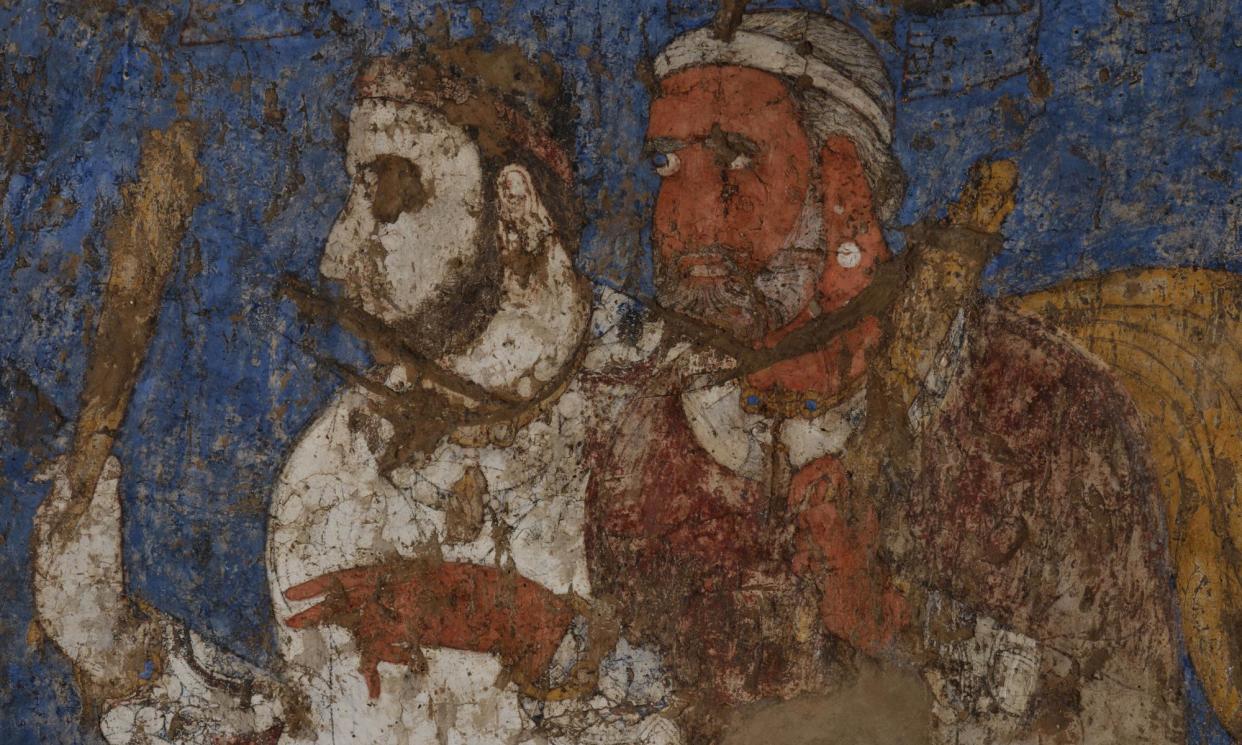Silk Road leads from Uzbekistan to London for landmark exhibition

A monumental six-metre-long wall painting created in the 7th century, and 8th-century ivory figures carved for one of the world’s oldest surviving chess sets, are among treasures set to be seen in Britain for the first time.
The items will travel from the ancient city of Samarkand to the UK for an exhibition opening in September, as part of the first-ever loan from museums in Uzbekistan to the British Museum.
Silk Roads, a groundbreaking exhibition spanning AD500 to 1000, will go beyond the popular image of trade between east and west, with camel caravans and merchants selling silks and spices in bazaars, to explore connections between cultures and continents, centuries before the development of today’s globalised world.
It will show that, rather than a single trade route, there were overlapping networks linking communities across Asia, Africa and Europe. More than 300 objects will include loans from 29 national and international institutions, many on display in the UK for the first time. Tickets for the exhibition, which runs until February, go on sale on Monday.
Yu-ping Luk, one of the lead curators of the show, said: “We will of course have camels, and there will be silk and references to camel caravans that are also a very important part of the Silk Roads. But we wanted to go beyond that and tell a richer story of the networks in multiple directions, not just east-west but north-south and elsewhere, and also the movement of objects, peoples and ideas.”
The six-metre wall painting, a vibrant depiction of a procession of people riding camels, horses and an elephant, is from the “Hall of the Ambassadors” in Samarkand. Dating from the 660s and part of a series excavated in the 1960s, it is an unparalleled example of art created by the region’s ancient Sogdians, who were great traders. Its title derives from its portrayal of peoples of different origins, from neighbouring regions and as far as the Korean peninsula, who were coming to Samarkand to trade.
Luk, the British Museum’s curator of Chinese paintings, prints and central Asian collections, said it shows the cosmopolitanism of the Sogdians: “We’re really excited to be able to borrow it and show it for the first time in the UK.”
She said Silk Road traders are sometimes depicted as “peddlers or small-scale merchants”. “But here is an image from their homeland that shows them having prospered from their trade.”
The 8th-century ivory carvings are seven chess set pieces which have survived. Luk said: “They are among the earliest – if not the earliest – chess pieces known in the world. They were excavated from a site in Samarkand and are thought to date from the 700s. The figures represent part of an army. There are foot soldiers, horse riders, people riding chariots, an elephant rider. Ivory was a luxury commodity at the time, which indicates that this set was a high-value object.
“When chess was first developed in India around AD500, before spreading to the Middle East and Europe, it was a game for training military strategy among the elite. This is a great example of how, during the period we’re covering in the exhibition, all these networks and connections have a legacy to the contemporary period, when chess as a game is spreading.”
Due to its scope and geographical coverage, the exhibition will feature objects from every department across the British Museum, including Indian garnets discovered in Suffolk and Chinese ceramics found in Egypt, reflecting the astonishing reach of the Silk Road networks.
Exhibits will also include a gilded container that probably held chrism, a blended oil used in Christian rituals such as baptism, which was often scented with balsam, a valuable plant resin from the eastern Mediterranean or Arabia. In the AD720s, tight export controls inspired an English bishop called Willibald to smuggle it past Umayyad customs officials at Tyre in present-day Lebanon. He concealed the balsam in a hollowed-out gourd beneath a layer of mineral oil, which masked its distinctive fragrance.
Sue Brunning, curator of European early medieval and Sutton Hoo collections, said: “It’s tremendously exciting to expand the Silk Roads story into parts of the world that are not traditionally associated with its popular image – including here in Britain.
“For instance, visitors will encounter a whalebone box made in the north-east of England but carved with stories, histories and languages drawn from the wider world.”


